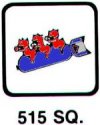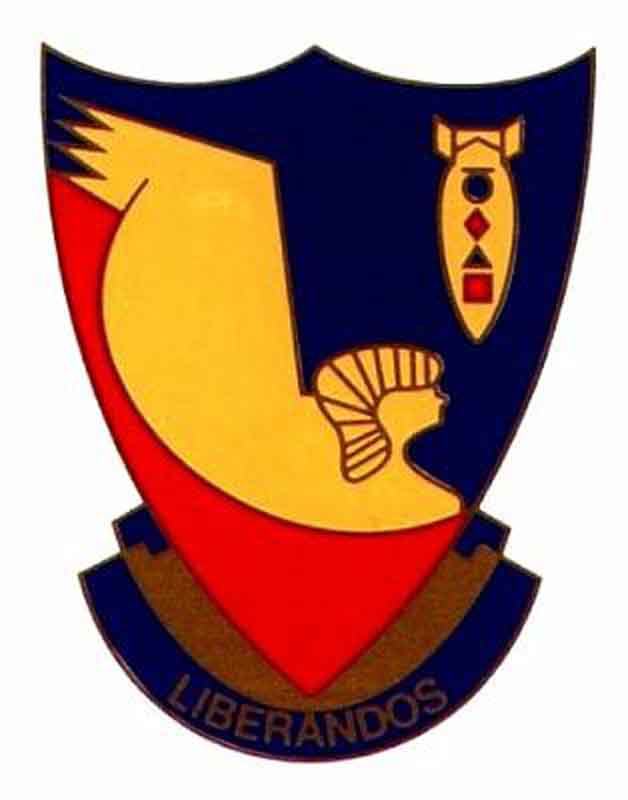Franklin Christianson's the Sep 8, 1944 mission
Franklin Christianson's account of the Sept 8, 1944 mission.
On September 8 Col. Schmid with Lts. Floerke and Kamps led another four star attack on the Nis, Yugoslavia, railroad yards, one of the most important rail junctions in the Balkans. It was on the main line of the Orient Express where the lines from Istanbul and Salonika converged. * This was the first attack in the month which met heavy, intense, and accurate flak which caused major damage to two of our aircraft.
The 15th AF did not distribute major decorations liberally. They definitely had to be earned. On the Nis mission Lt. Franklin O. Christianson "earned" his Distinguished Service Cross and co-pilot John Griffin and Staff Sergeants Geo. J. Cabral, Jr. and Charles W. Brooker earned the Distinguished Flying Cross. Just a few seconds before reaching the target, a burst of flak hit Christianson's B-24. It caused but minor damage.
Then, in quick succession after "bombs away" came four direct hits. Christianson was hit badly and slumped in his seat. Griffin and three gunners were wounded. Number three engine was knocked out and quit cold. The oxygen system was shot out, the rudder controls were cut, and the gas lines were peppered with holes. One fragment of flak severed the main power cable to the ball turret which shorted and showered sparks igniting the leaking gasoline. The blaze spread to the ammunition and soon the flight deck and the turret were a mass of flames and popping .50 calibre cartridges. The navigator, bombardier, engineer and nose gunner ** were forced to bail out of the ship by the intense flames and exploding ammunition. To top it all off, number two engine had to be cut off due to a shell hit through the gas tank.
Normally the remaining crewmen would have bailed out as well, however, they decided to fight it out. They made a rapid survey of the almost hopeless situation. The bomber was ablaze in several places, number two engine was out, number three engine was windmilling so violently that it threatened to tear itself loose, and the controls were useless. They were without oxygen although flying in excess of 20,000 feet, and Chris - with a terrible shell hole in his thigh - was just snapping out of the initial shock of his wound and bleeding profusely.
As soon as Chris took in the situation he set the bomber on automatic pilot. Then he, Griffin, Cabral and Brooker succeeded, by using fire extinguishers, water from the thermos bottle and their hands, in extinguishing and beating out the flames. Chris then allowed himself to be given first aid while Griffin took over the controls. Cabral, assistant engineer, succeeded in stopping many of the gasoline leaks but was unable to do anything about the oxygen system or rudder controls.
Bearing its crew of wounded men and operating on two engines, it became a difficult task to keep the shell-battered and flame-scarred bomber aloft. As it was, it was dropping dangerously due to lack of power and was forced to leave the protection of the formation although still in enemy territory and liable to enemy aircraft attack. Now our men found themselves alone, lost, and minus a navigator and navigational aids. All maps had been destroyed by the fire.
Their only hope was to keep the crippled bomber aloft until they could reach friendly territory where their return to base would be easier after they abandoned the ship.
After having reached a point beyond which attacks by enemy planes could be expected it was decided, if possible, to push their bomber just a little bit farther to lessen their long walk home when they bailed out. To do this the ship had to be made considerably lighter. Chris, although suffering from a wound which would have dropped a horse, held Cabral by the heels over the open bomb bay doors while he threw out all loose equipment, ammunition and guns. By this heroic action, and by adding increased power and RPMs to the two good englnes, it was possible to scrape over the mountains of Albania. Then, by keen eyesight and good luck, the formation was sighted far ahead out over the Adriatic. Having come this far and surmounted all their difficulties they decided to follow the formation and try to make it home.
Reaching the area of the home field, a landing that called for all the skill and coordination at the command of the four men was attempted. Technically it was something like this: the ailerons and elevator controls were flown manually while the rudder was left on auto-pilot. Cabral checked the landing gear down, locked it, and made ready for a crash landing. Brooker put the good engines on crossfeed and checked the nose wheel and gear. A long, high approach to the field was made, half flaps were pumped down, and a most successful landing was made without additional damage to the bomber or injuries to its gallant crew.
"Only through the most superior flying skill, team work, undaunted spirits and unfailing courage did these gallant men return themselves and their big bomber back to base" *
All of the last ten missions most were extremely successful had been flown in 28 ship 4 flight formations. There had been only one turn back, 279 aircraft had dropped their bombs on the target
* (Written In The Sand, p
277)
** 1st Lt. Nicholas Gettino, 1st. Lt. Paul E. Kiecker, S/Sgt. John A. Greene, S/Sgt. William E. Trezise


The website 376bg.org is NOT our site nor is it our endowment fund.
At the 2017 reunion, the board approved the donation of our archives to the Briscoe Center for American History, located on the University of Texas - Austin campus.
Also, the board approved a $5,000 donation to add to Ed Clendenin's $20,000 donation in the memory of his father. Together, these funds begin an endowment for the preservation of the 376 archives.
Donate directly to the 376 Endowment
To read about other endowment donation options, click here.
Reunion
NOTE change in the schedule !!
DATES: Sep 25-28, 2025
CITY:Rapid City, SD
HOTEL: Best Western Ramkota Conference Hotel; 2111 North LaCrosse St., Rapid City, SD 57702; 605-343-8500
Click here to read about the reunion details.



















